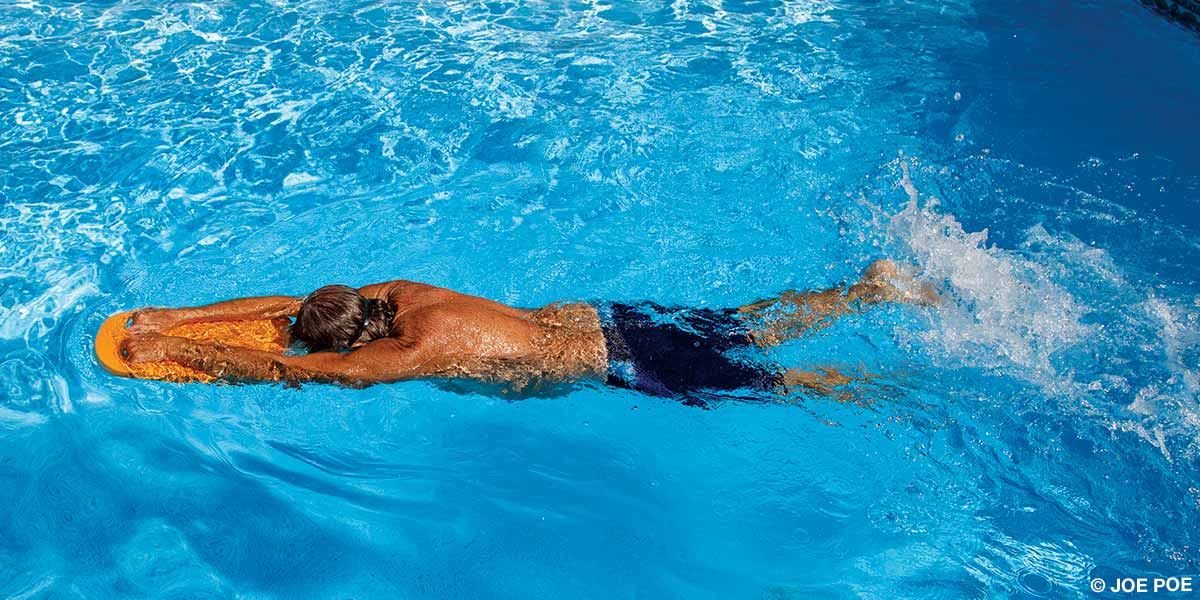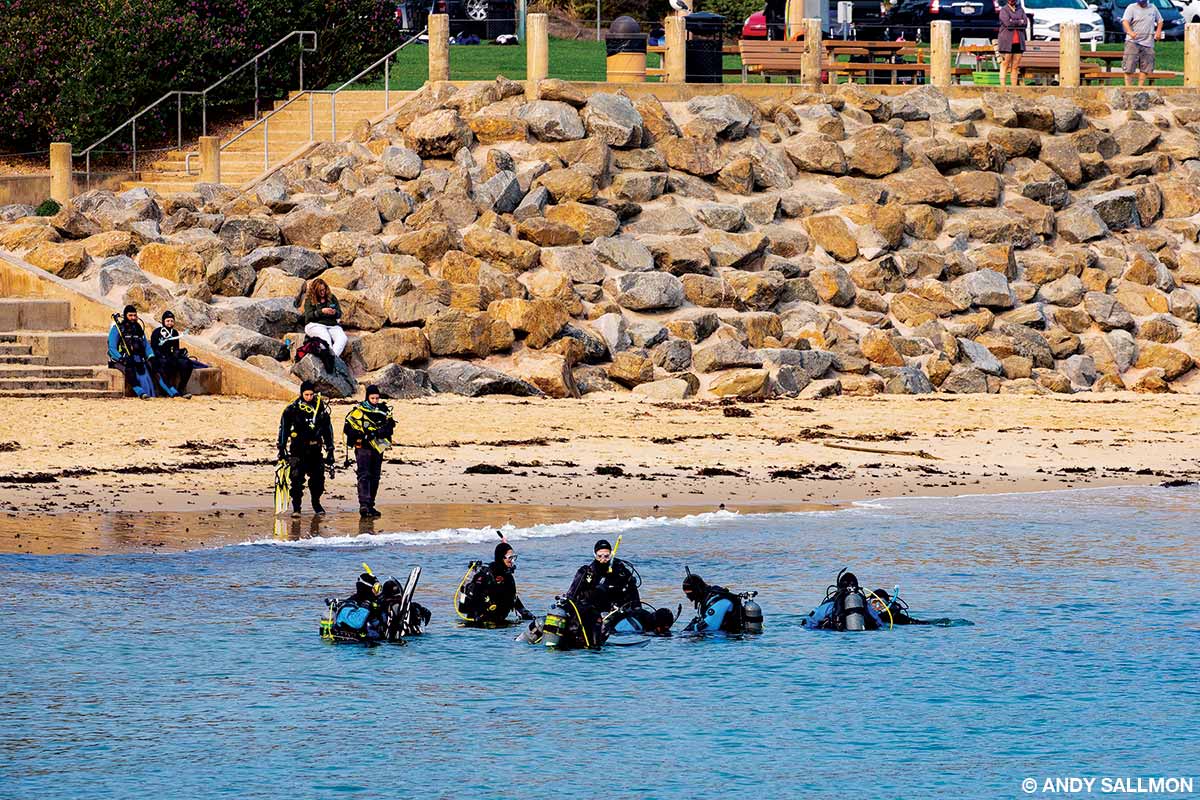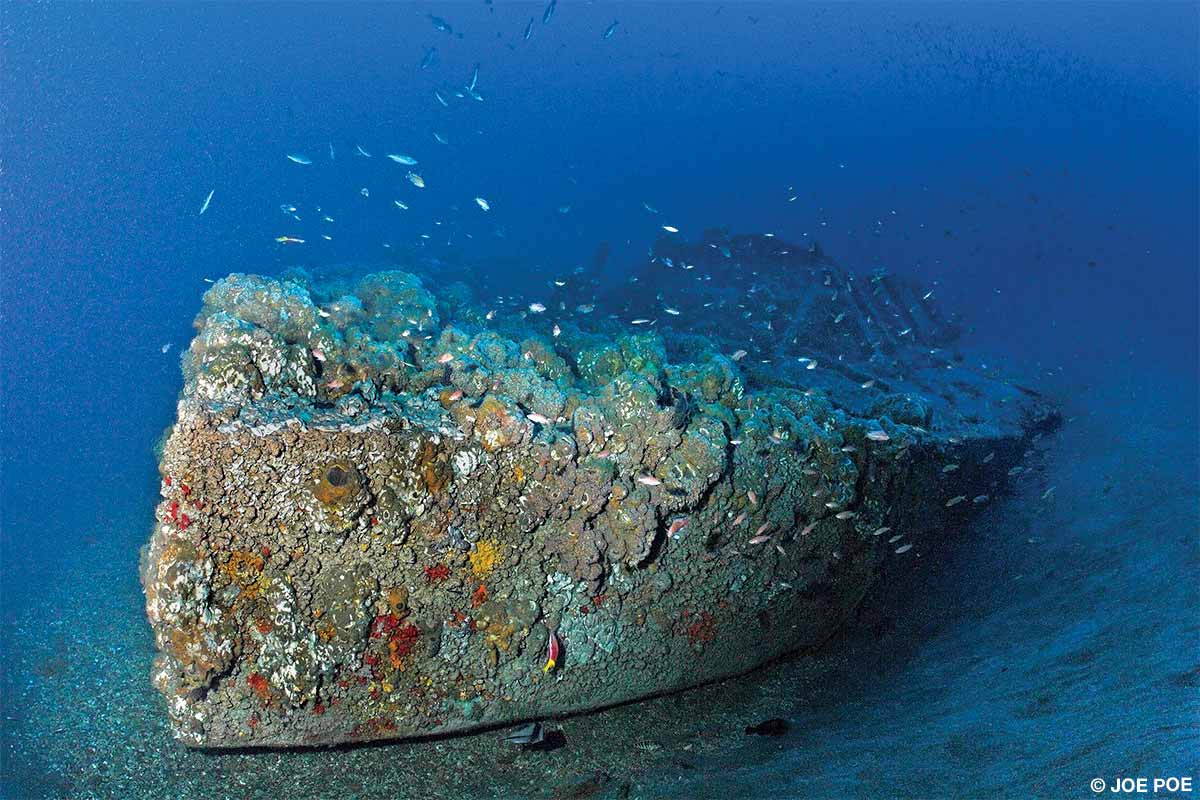Swimming is a noncontact physical activity that lets you be socially distant while still receiving many health benefits. Exercising in water can increase cardiac function, reduce blood pressure and improve muscle blood flow, respiratory function and brain function. Water reduces joint impact, so you can do high-intensity exercise with little to no discomfort from impact. Swimming targets your entire body and allows a greater range of motion for joints than land-based exercise. Blood flows more freely to your upper body, while the water supports you and lowers gravity’s impact.
Aside from allowing me to avoid that sunrise alarm, shore diving offers other freedoms as well: the last-minute choice of a dive site, the ability to do a two-hour dive without worrying a boat crew and the liberty to add a dive to my day if conditions allow. As an added benefit, beach diving can be quite economical compared with boat diving. And some of the most incredible sites in the world are most easily dived from the beach
The current wrapped the line around my ankle and tighten like a noose. My 30-cubic-foot safety cylinder should have provided plenty of oxygen to complete my decompression stops, but I hadn’t closed the valve after charging it, so the current rushing past the mouthpiece purged the tank. I was now trapped 20 feet beneath the surface with nothing to breathe and no one aware of my peril, hoping that my mistakes with the line and my breathing gas wouldn’t be my last.
After cylinders first enter service, an annual visual inspection and a five-year hydrostatic test are required. These requirements include cylinders used for diving and other life-support applications and cover breathing air, nitrox, heliox, trimix, oxygen for decompression and argon for drysuit inflation. How are these standards mandated and enforced? What are good and safe practices?
Where we encounter marine megafauna, we see only a tiny slice of their habitats and lives, which rarely includes feeding. These animals may travel thousands of feet vertically or migrate a few thousand miles horizontally to meet their nutritional needs. Some of them — sperm whales, for example — must do both: descend to depths of up to a mile or more to feast on aggregations of squid and roam across large swaths of the Pacific to avoid depleting their food resources in any one area.
No matter which alternate air source you choose, learn to calculate your air consumption and regularly practice emergency procedures. There are many ways to configure each type of redundant breathing-gas supply, but make sure your setup matches your training, gear arrangement and dive objectives. If a naysayer thinks your equipment choice is unnecessary, let them know that the difference between a fatal accident and an embarrassing incident could come down to a breath or two. Any redundancy is better than none.
With adverse events, there is almost always a cascade in four phases: the trigger, the disabling agent, the disabling injury and the cause of death. Individually, each event is avoidable. Recognizing one at the time of occurrence is an opportunity to react and attempt to mitigate the risk before it becomes a problem. In root cause analysis of adverse events, the most significant factors are the lack of recognition and failure to react to the event.
Underwater photographers sometimes refer to the narrow water zone where a subject splits the surface as the Plimsoll interface. Opportunities abound here for dynamic shots achieved by angling the camera above or below the waterline. The dedicated and creative underwater photographer can capture traditional over-under split shots with a standard straight meniscus and dramatic reflections from below of the subject, the sunlight or both as part of a modified split shot or a fully underwater picture.
Audible cues and signals can get your buddy’s attention, signal a group of divers or indicate a problem you can help address. Even though we may dive to escape the noise of everyday life, we need to pay attention to the sounds around us. Doing so could make your dive even more special because your buddy got your attention to see something remarkable — or you may even save a life.



